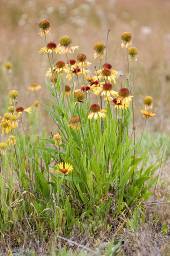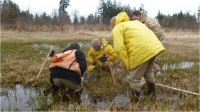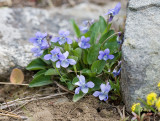Celebrating a Successful Inaugural Season for the Butterfly Program at Mission Creek
by Graduate Research Associate Dennis Aubrey
The Sustainability in Prisons Project’s newest program, the rearing of Taylor’s checkerspot butterflies at Mission Creek Corrections Center for Women, has just concluded its first season. A second generation of more than 3500 caterpillars has now safely gone into diapause, and the effort can officially be considered a complete success. Some of the season’s highlights include:
More than 700 Taylor’s checkerspots were released onto South Puget Sound prairies. Six hundred of these were released as post-diapause caterpillars in early March, placed one at a time on available host plants. Another 101 were released as adults, following breeding and oviposition. These were placed carefully on nectar flowers or, if they chose to, simply allowed to flutter off across the prairie.
Breeding activities were also highly successful. Males and females were crossed according to specific lineage pairings designated by staff at the Oregon Zoo to preserve genetic diversity. Seventy-two mating introductions were made, with 32 of these resulting in a successful pairing. From these, 3,515 eggs were laid. 3,395 of these successfully developed into healthy caterpillars and entered diapause, a survivorship of 96.6%.
A novel research project was carried out at the facility, examining host plant choice by female checkerspots. This work is showing that they prefer to lay eggs on two native plants, harsh paintbrush and Washington-endangered golden paintbrush, over the exotic but well-documented host English plantain. This finding has the potential to alter restoration practices for the butterfly and possibly unite the recovery efforts for both it and the golden paintbrush.
Currently, in addition to caring for the 3,624 caterpillars in diapause at the facility, inmate technicians are working on end-of-season reporting, putting in host plant gardens around the greenhouse and tending the plants, and creating a butterfly coloring book for children visitors to the prison. Their work with the butterflies this season has been exemplary in every way, and the overwhelming success of the project’s first year is thanks to their tireless and meticulous work.

Undergraduate intern Caitlin Fate releases a Taylor's checkerspot on Scatter Creek Prairie, Spring 2012. Photo by D.Aubrey.

A Taylor's checkerspot lays eggs on a Golden paintbrush (Castilleja levisecta), a state-endangered plant.
To support the Taylor’s checkerspot program and others like it, click here to donate to SPP.














